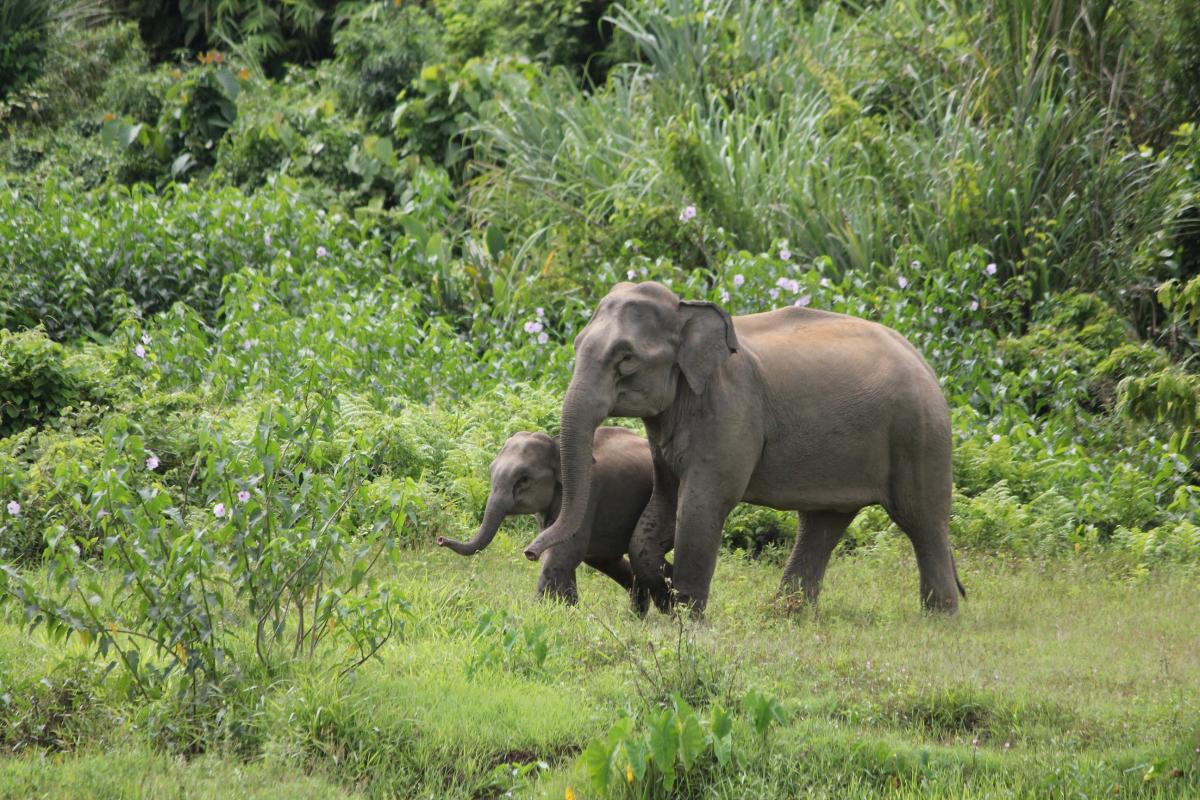In September 2018, near the Indian city of Tumkur, villagers recorded a beleaguered Asian elephant trying to nudge the limp body of her dead calf back to life. As her ears fluttered in distress, she used her trunk and feet to jostle the lifeless carcass for more than 24 hours. Eventually, 12 more adults gathered around the deceased calf, as if to comfort the mother.
Such seeming displays of mourning are extremely difficult to spot—much less study—in the dense jungles of southern Asia. But now, thanks to a few dozen YouTube videos, scientists finally have the data they need to analyze grieflike displays in these elusive pachyderms. And they’ve found some surprises.
Conservation biologist Sanjeeta Sharma Pokharel had only observed one instance of an elephant responding to another’s death, after 4 years of fieldwork in India. Even colleagues who had spent decades studying Asian elephants in the bush had seen these “thanatological behaviors” only a handful of times. So Pokharel and her team at the Indian Institute of Science’s Centre for Ecological Sciences turned to YouTube.
The researchers punched in search terms like “Asian elephant death” and “elephant response to death.” Ultimately, they collected 39 videos capturing 24 cases of thanatological behavior in Asian elephants between 2010 and 2021.
The videos recorded several compelling scenes, the team reports today in Royal Society Open Science: Elephants patting a deceased family member with their trunks or attempting to revive it with kicks, and gathering, vigillike, near its remains.
Some of the videos also captured rarer behaviors, never before described in detail. In multiple clips, adult elephants use their trunks to pat their still-living friends on their heads; in another, a calf snuggles up to its dying mother, who had become ensnared in viscous mud. In five videos, adult female elephants scooped up deceased calves with their trunks and carried them through the forests for days, possibly weeks, at a time.
“Online
like this offer a fantastic opportunity to observe rare behaviors in elephants,” says Lindsay Murray, an animal psychology researcher at the University of Chester who was not involved with the work. Murray, who has studied how death affected the personalities of surviving Asian elephants at the Chester Zoo, has herself turned to zoo webcams and online videos to remotely study animal behavior during the pandemic.The new study is part of a growing trend of research utilizing crowdsourced video archives to learn more about animal behavior and ecology, called iEcology by some scientists. Researchers have used YouTube videos to study everything from behavioral differences between urban and forest-dwelling squirrels to how drones disturb wildlife like albatross and flamingoes.
Some of the newly documented pachyderm behaviors—including carrying dead infants—have been observed in African elephants, as well as in chimpanzees, giraffes, and dolphins. But it remains unclear whether such actions represent grief or mourning in the human sense.
Pokharel, who now works with the Smithsonian Conservation Biology Institute, believes it’s possible. “As a human, when I see an elephant reacting that way, I think they are emotionally connecting with it,” she says. “But as scientists, we need to prove it.”
For now, Shermin de Silva, a conservation biologist and director of Sri Lanka’s Udawalawe Elephant Research Project, is convinced. “It’s difficult to see behavior like that and not call it grief,” says de Silva, who was not part of the new work. “Studies like this help bridge that emotional divide between humans and other species.”






































